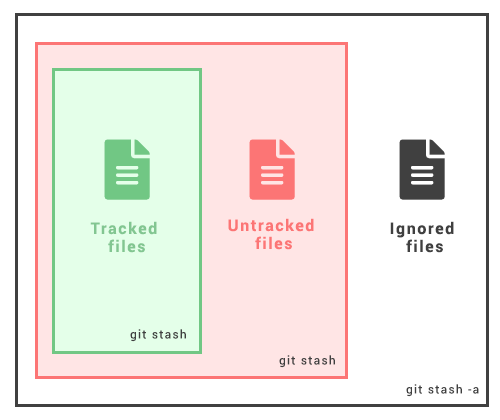
Staged changes are the changes that have been added to the staging area. By default, the stash command does not include untracked changes. The git stash command will only stash staged and unstaged changes to files already being tracked in the Git repository. They can be applied to your codebase when you are ready by using the stash pop command.
#Git stash delete all code
The changes you made to your code have been saved for later. When your code is stashed, your repository is reverted to its previous commit without the changes you made. Now, if we run the git status command again, we can see that there is nothing to commit: The git stash command has saved the changes we made to our repository for later. Your branch is up to date with 'origin/master'. Here’s the syntax for the git stash command: This includes both staged changes (changes added to the staging area using git add) and unstaged changes. When you run git stash, the changes you have not pushed to a commit in your current working directory will be saved for later. The git stash command is used to stash code for later. We also do not have to think about sorting the changes we make between commits. Having a clean directory means we can make changes without having to worry about merge conflicts. This means that stashing our code gives us a clean working directory with which we can work. Stashing reverts the current working directory to the last commit. Then, you can come back later and apply the changes you have stashed to your code. Once a file has been stashed, you can work on something else. Stashing allows you to save, or “stash,” the changes you have made to a file for later. In other words, stashing lets you work on something else in a Git repository without having to discard or commit your existing code. This is because larger and more complex commits make it more difficult for other developers to read the history of a repository. You would not want your bug fix and feature to appear in the commit. You would want to fix the bug first, before committing the feature-focused code to the repository. This is because the bug report would likely take precedence over the feature you are developing. You may want to save the changes you made first toward the feature and then fix the bug. You’re already working on implementing a feature. One scenario where this may happen is in fixing issues. Sometimes, when you are writing code, you will want to save the changes you have made, but not commit them to the repository. Stashing lets you save code in your working directory and index for later.
#Git stash delete all how to
In this tutorial, we’ll discuss, with examples, the basics of stashing in Git and how to use the git stash command. Stashing lets you save the code on your working branch for a later date. That’s where the git stash command comes in handy.

It points to origin jsChanges, but it says it's gone. If we do branch -vv, we still have the jsChanges branch. We do git remote prune origin, and it has pruned the jsChanges branch. If we want, we can do a dry run first, and it will go to GitHub and say that it would prune the jsChanges branch, because that no longer exists on our remote. We can tell it that it's gone by doing git remote prune origin. If we do git branch -vv, it even thinks that it exists in the origin still, but we've deleted that on GitHub. However, if we do git branch here, we see that jsChanges still exists locally. Deleting this branch won't lose the commit because the commit's in this tree. Importantly, the jsChanges branch is pointing to a commit, which is in the master tree now. Deleting a branch is just deleting the pointer and not deleting the actual commit. If we do a git log oneline and we can add graph here to see our merge graph, we can see that these branches are really just pointers to these hashes. Back in our code, we can do git branch -vv to see that master and that jsChanges both point to origin. Instructor: We have just successfully merged this pull request and now we can click delete branch to clean it up.


 0 kommentar(er)
0 kommentar(er)
